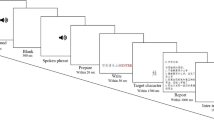Abstract.
Out-of-order diacriticals introduce significant complexity to the design of an online handwriting recognizer, because they require some reordering of the time domain information. It is common in cursive writing to write the body of an `i' or `t' during the writing of the word, and then to return and dot or cross the letter once the word is complete. The difficulty arises because we have to look ahead, when scoring one of these letters, to find the mark occurring later in the writing stream that completes the letter. We should also remember that we have used this mark, so that we don't use it again for a different letter, and we should also penalize a word if there are some marks that look like diacriticals that are not used. One approach to this problem is to scan the writing some distance into the future to identify candidate diacriticals, remove them in a preprocessing step, and associate them with the matching letters earlier in the word. If done as a preliminary operation, this approach is error-prone: marks that are not diacriticals may be incorrectly identified and removed, and true diacriticals may be skipped. This paper describes a novel extension to a forward search algorithm that provides a natural mechanism for considering alternative treatments of potential diacriticals, to see whether it is better to treat a given mark as a diacritical or not, and directly compare the two outcomes by score.
Similar content being viewed by others
Author information
Authors and Affiliations
Additional information
Received October 30, 1998 / Revised January 25, 1999
Rights and permissions
About this article
Cite this article
Seni, G., Seybold, J. Diacritical processing for unconstrained online handwriting recognition using a forward search. IJDAR 2, 24–29 (1999). https://doi.org/10.1007/s100320050033
Issue Date:
DOI: https://doi.org/10.1007/s100320050033




